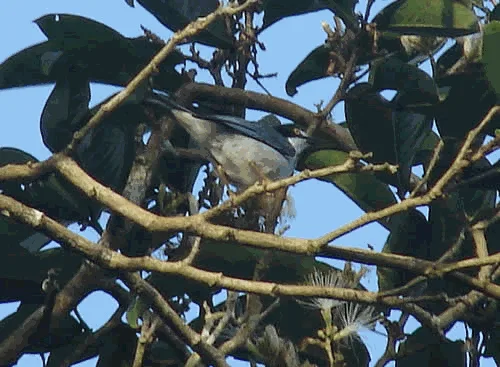 Hooded Tanager (Nemosia pileata) [order] PASSERIFORMES | [family] Thraupidae | [latin] Nemosia pileata | [UK] Hooded Tanager | [FR] Guira a bonnet | [DE] Schwarzkappen-Tangare | [ES] Cachaquito Gigante | [NL] Kaptangare Subspecies
Physical charateristicsIt has yellow legs and a yellow iris. The male’s head and sides of the neck are black giving the hooded appearance while the lores are white. Remaining upperparts are blue-grey while underparts are white. Listen to the sound of Hooded Tanager [audio:http://www.aviflevoland.nl/sounddb/H/Hooded Tanager.mp3]
RangeSouth America : widespread HabitatIts natural habitats are subtropical or tropical moist lowland forests, subtropical or tropical mangrove forests, and heavily degraded former forest. It is found in light woodland, gallery forest and plantations while in the Amazon Basin it is seen in varzea woodland and forest borders. ReproductionBuilds an open cup high up on a tree branch. Nest is made out of grass and and dead leaf. Feeding habitsIt lives in small groups of about six birds, seeking insects and perching on bushes and isolated trees. ConservationThis species has an extremely large range, and hence does not approach the thresholds for Vulnerable under the range size criterion (Extent of Occurrence <20,000 km2 combined with a declining or fluctuating range size, habitat extent/quality, or population size and a small number of locations or severe fragmentation). The population trend appears to be stable, and hence the species does not approach the thresholds for Vulnerable under the population trend criterion (>30% decline over ten years or three generations). The population size has not been quantified, but it is not believed to approach the thresholds for Vulnerable under the population size criterion (<10,000 mature individuals with a continuing decline estimated to be >10% in ten years or three generations, or with a specified population structure). For these reasons the species is evaluated as Least Concern.  MigrationSedentary throughout range Distribution map |
]]>
